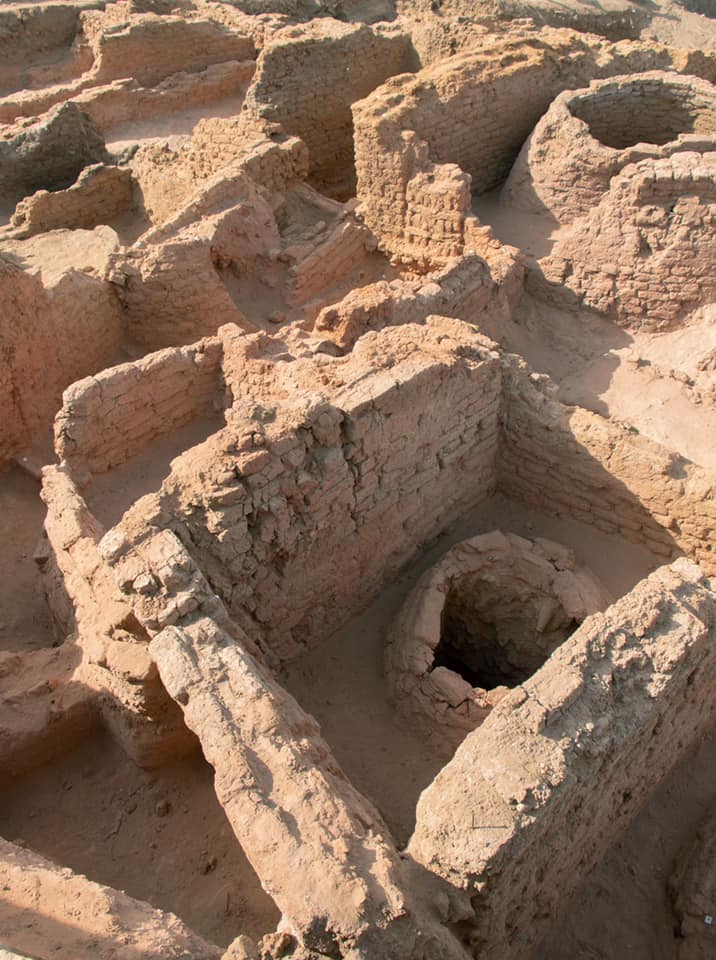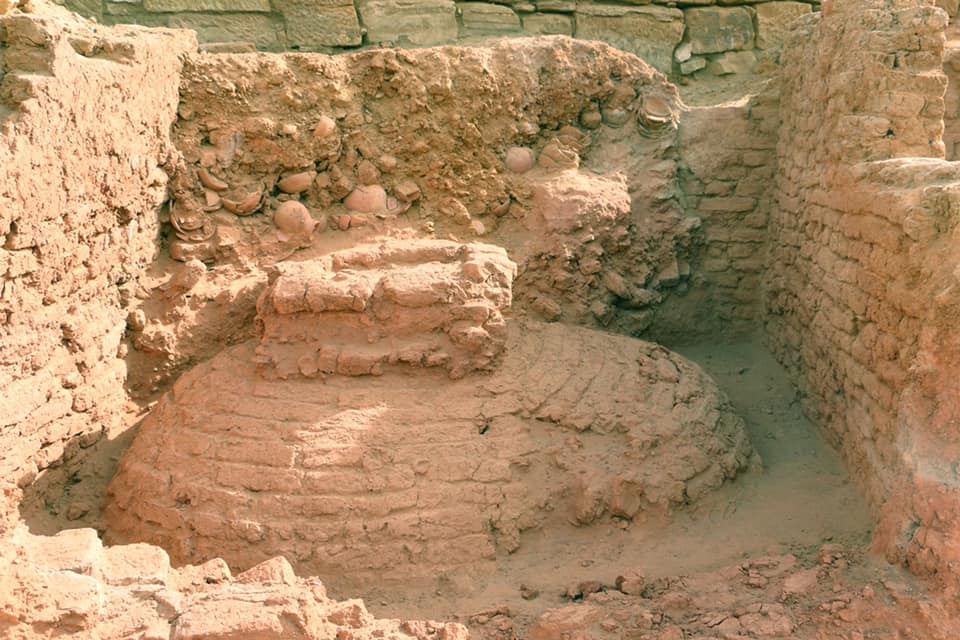CAIRO – 2 March 2022: The joint Egyptian-Austrian archaeological mission, working at the Kom Ombo Temple in Aswan, discovered an administrative center dating back to the First Transitional Period.
Secretary-General of the Supreme Council of Antiquities Mostafa Waziri explained that during the excavations in the northeastern part of the Ptolemaic Temple in the Kom Ombo Temple area, the Egyptian-Austrian mission discovered more than 20 conical silos, which is thought to be likely an administrative facility that was used to store and distribute grain during the First Transitional Period from 2180 to 2050 BC.
Waziri described the discovery as “important and unique” in the region, as it indicates the importance of the city of Kom Ombo during the era of the First Transition, and that it had a distinct agricultural and commercial activity and was inhabited by large numbers of residents.

For his part, Director General of Aswan Antiquities Abdel Moneim Saeed said that the architectural elements of the silos, including vaults, stairs and storage rooms, are in a good state of preservation, noting that the walls are up to two meters high, and there are some silos that are more than two meters long.
This is in addition to the presence of the remains of mice bones and their excrement inside the rooms of one of the silos, which indicates that the storage rooms were infested with insects and rodents.

For her part, Head of the mission from the Austrian side Irene Foster added that the mission was also able, during its work in the archaeological hill surrounding the Ptolemaic Temple, to discover the remains of the foundations of a fort that was likely built during the British occupation of Egypt during the nineteenth century, and was used as a control and defense point to monitor the course of the Nile River during the Mahdist revolution in Sudan during the year 1881 / 1885 AD.
Comments
Leave a Comment